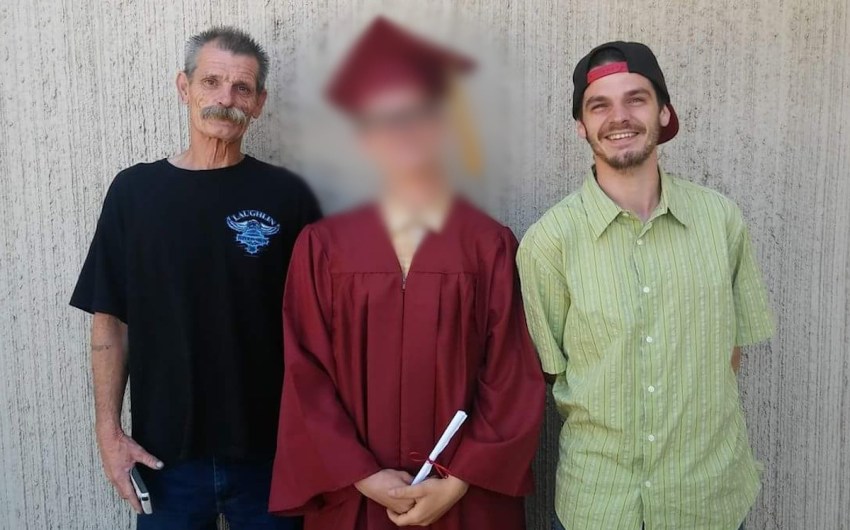Delusional or Disturbed? ― Jury Begins Deliberations in Attempted Murder Trial
Cora Vides, Who Pleaded Insanity, Faces at Least 11 Years Behind Bars if Convicted

Where Cora Vides was looking, what she was hearing and saying, and precisely what she was thinking as she tried to kill her friend are among the central questions of her attempted murder trial that is now in the hands of a Santa Barbara jury. Their deliberations began Monday and remain ongoing as of press time.
In his closing statements, Vides’s defense attorney Robert Sanger argued his client was experiencing a psychotic break when she suddenly attacked Georgia Avery at a late-night get-together in 2021. Both were 18 years old at the time and seniors at Laguna Blanca School, a private high school located in Hope Ranch.
Sanger pointed to Vides’s seeming inability to look at Avery during the bloody fight in her bedroom. Instead, he said, she stared blankly at the wall, as if catatonic. Only after a number of minutes had passed and the two reached a stalemate in their struggle did Vides “snap out of the depths of her dissociation,” he said.
Vides also claimed she heard Avery say her name as she pinned her down, when in fact Avery’s larynx was so damaged from a stab wound to her throat that she could not speak, Sanger noted. “She heard something that wasn’t there,” he said, citing expert testimony from a psychiatrist that Vides was fully detached from her environment and actions at the time.
Moreover, he went on, Vides did not have the capacity to think logically about what would happen next. The attack took place at her family home while her mother and father slept upstairs. “What was she going to do?” Sanger asked. “What was the escape plan?”
“It is clear that this was not an intent to kill,” Sanger argued. “It was delusional. There was a ‘bad thing’ scripting this,” he said, referencing an overpowering feeling of depression and dread that Vides told detectives had taken hold of her in the days and weeks leading up to the incident. “This is a mental health case, not an attempted murder case.”
That “bad thing” was not a symptom of impending psychosis but a planned and very deliberate intent to kill, lead prosecutor Kevin Weichbrod countered in his own closing statement. “It was homicidal ideation,” he said, referencing another statement Vides made to police where she said the “bad thing” wanted Avery “gone.”
Vides was romantically fixated on Avery but knew her love was unrequited, Weichbrod argued. She’d recently made advances on two of her other close friends but was rebuffed both times, expressing in a diary entry her desire to hurt one of the women.
She was also fascinated with knives, having asked for and received a switchblade from her father for her 18th birthday. “This case is a window into a disturbed mind,” Weichbrod said, displaying a drawing Vides had given Avery just days before the stabbing of an angel playing a violin, Avery’s longtime instrument.
With respect to Vides’s eye direction during their prolonged struggle, Weichbrod said she was not in some sort of trance but purposely looking away from the carnage she’d inflicted. “She thought it was going to be easy. She thought it was going to be quick,” Weichbrod said of Vides’s initial knife strike to the middle of Avery’s neck, which missed both of her carotid arteries by less than a centimeter. “Instead, it was difficult, and it was bloody,” he said.
Weichbrod played audio from Vides’s interview with detectives, where she confessed: “I couldn’t look at her.” Avery similarly testified during the trial: “It seemed like she knew what she was doing because everything was very deliberate.” Vides only stopped her attack because she could no longer stomach it, Weichbrod argued, not because she had snapped back to reality.

During the same police interview, Vides acknowledged receiving the switchblade helped her understand what the “bad thing” wanted. “I kinda knew that’s what I was gonna use,” she said. Vides also told detectives she said little to Avery as she started to lose consciousness, whispering only “Shh …” while she held her down on the bed.
But before Avery lost her strength, she was able to pick up a shoe and start to hurl it toward the wall in an attempt to wake the household. Vides, however, snatched it from her hands. “Think about the mental faculties required to do that,” Weichbrod said. “She understands the victim is trying to alert someone and is taking steps to stop her. That shows awareness.”
Weichbrod emphasized how Vides lulled Avery into a state of relaxation right before she acted, covering Avery’s eyes, guiding her through a meditation, and telling her to think happy thoughts. “Like putting down a favorite pet,” Weichbrod said. “She didn’t want her to suffer, but she wanted her gone.”
When Vides’s first attack failed and Avery began to fight back, Vides continued her assault by trying to strangle Avery in a headlock and then smother her with a blanket, Weichbrod stated. “What’s important about intent in this case is that she continued trying to do what she intended to do, which was kill Ms. Avery,” he said. Vides’s original “escape plan” was suicide before it all went awry, he argued.
Dr. Avak Howsepian, the Fresno-based psychiatrist hired by Vides’s defense team to evaluate her 16 months after the incident, diagnosed her with “unspecified dissociative disorder,” along with a dozen other conditions, including social anxiety, dependent personality disorder, and gender dysphoria.
He said Vides’s dysfunctional home life contributed significantly to her overall distress. Her mother was suffering from severe depression, her father — a Microsoft finance executive — was emotionally unavailable, and her sister had a history of self-harm, specifically cutting. Vides frequently cut herself as well. In addition to giving Vides the switchblade for her birthday, Vides’s father had on another occasion given her sister a hatchet as a gift.
Howsepian testified that Vides’s mental state at the time of the stabbing was “singularly unusual” in that “she felt like a character in a novel.” She suffered from such intense “delusions of passivity,” he said, that she believed she had no agency over her actions and was being controlled by an outside force. To her, present time was catching up to a pre-written future, almost like a flashback in reverse. “I’d never heard a case described in this way in my entire career,” Howsepian said.
Vides began entering this dissociated state approximately two weeks before the stabbing, though it was hidden from everyone around her, Howsepian said. Vides’s sister testified the two of them had gone to the beach just the day before and everything seemed “normal.” Vides was “struggling mightily” against her concealed aggression but was ultimately unable to keep it at bay, Howsepian said.
Howsepian disagreed with three other psychiatrists who diagnosed Vides with only depression and anxiety. He said he was in the process of writing a six-volume series about the mistakes and misdiagnoses he claimed are rife in his field.
If convicted, Vides faces a minimum of 11 years behind bars, either in a state prison or psychiatric hospital, depending on the outcome of her sentencing. She remains out of custody on $1 million bail.

Margaux Lovely contributed to this report.
Premier Events
Thu, Apr 10 10:00 AM
Santa Barbara
Free Dry Eye Seminar w/ Dr. Zucker & Dr. Reynard
Sun, Mar 09 6:00 PM
Santa Barbara
Orchids After Dark @ The SB Intl. Orchid Show
Mon, Mar 10 6:30 PM
Santa Barbara
Science Pub: Rise of the Sunflower Stars
Tue, Mar 11 7:30 PM
Santa Barbara
Ain’t Too Proud
Wed, Mar 12 7:00 PM
Santa Barbara
Solas 30th Anniversary Tour
Wed, Mar 12 7:30 PM
Santa Barbara
Parents In Chains
Wed, Mar 12 8:00 PM
Santa Barbara
We the Beat Presents: The Motet
Thu, Mar 13 4:00 PM
Santa Barbara
Santa Barbara Countywide Education Job Fair
Thu, Mar 13 7:30 PM
Santa Barbara
The Theatre Group at SBCC Presents Sherwood: The Adventures of Robin Hood
Sat, Apr 05 7:00 PM
Solvang
Concert: Ozomatli
Mon, Jun 16 7:00 PM
Santa Barbara
























You must be logged in to post a comment.